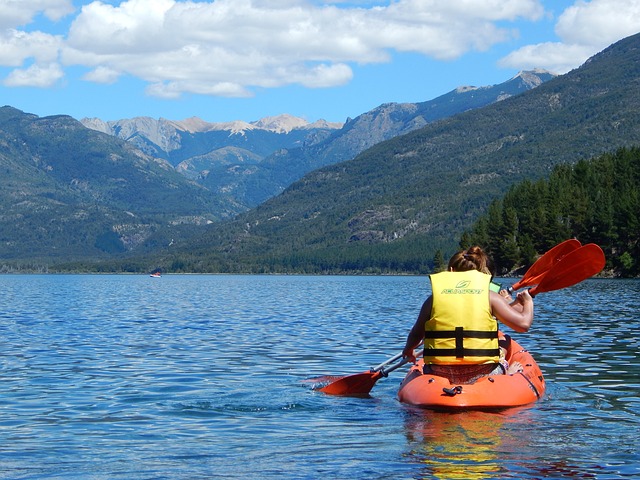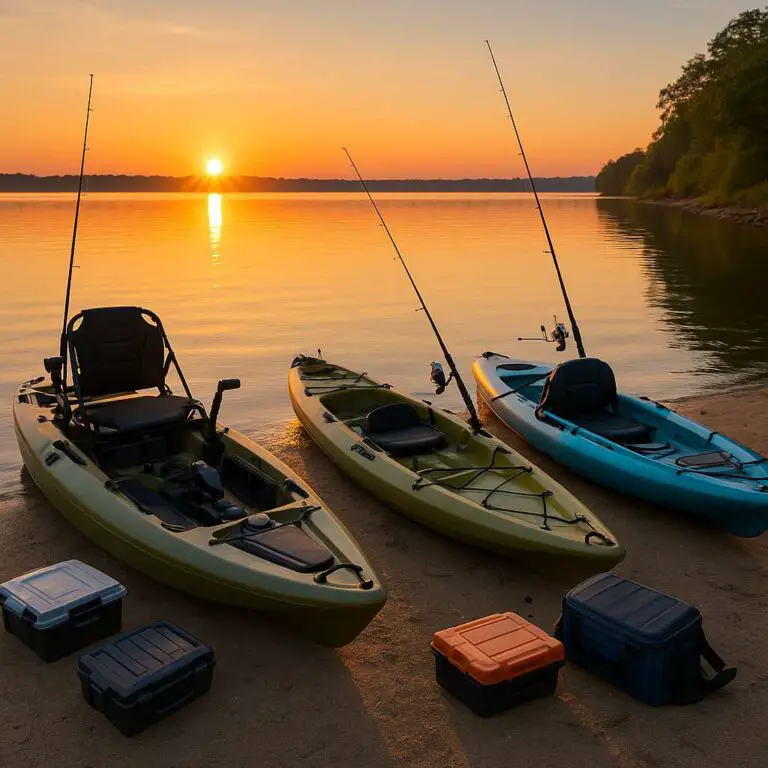Kayaking during pregnancy offers a viable and delightful way for expectant mothers to remain active, as long as they adhere to necessary precautions and prioritize their well-being and comfort. This low-impact exercise alternative aids in preserving muscle tone, enhancing cardiovascular health, and reducing stress.
To guarantee a secure kayaking experience, pregnant women should seek advice from their healthcare provider before embarking on this activity, opt for a stable sit-on-top kayak, and purchase a well-fitted personal flotation device (PFD) specifically designed for expectant mothers.
While kayaking throughout pregnancy, it is crucial to pay attention to your body’s signals and refrain from overexertion. Adjust your paddling technique to suit your evolving physique, maintain proper hydration, and choose tranquil water settings to ensure a safe experience. Paddling in the company of a partner or group can provide added security, encouragement, and pleasure.
This comprehensive guide will explore the key considerations for a safe and enjoyable kayaking experience while pregnant, including the benefits, precautions, and helpful tips for expectant mothers to make the most of their time on the water.
6 Benefits of Kayaking While Pregnant
- Low-impact exercise: Kayaking provides a gentle workout that puts minimal strain on your joints and muscles, making it an ideal choice for pregnant women. It helps to maintain muscle tone, particularly in the upper body and core, without causing excessive fatigue or discomfort.
- Stress reduction and mental health: Being out on the water and surrounded by nature can have a calming effect on the mind, helping to alleviate stress and anxiety often associated with pregnancy. Kayaking allows expectant mothers to clear their minds, focus on their breathing, and enjoy the soothing sights and sounds of the outdoors.
- Opportunities for outdoor bonding with friends and family: Kayaking is a social activity that can be enjoyed with loved ones, making it a great way to strengthen relationships and create lasting memories. Paddling together can foster a sense of camaraderie and support, which can be particularly helpful during pregnancy.
- Improved cardiovascular health: Regular kayaking helps to increase heart rate and improve circulation, which in turn contributes to better cardiovascular health for both the mother and the baby. This low-impact aerobic exercise can also help to manage blood pressure and maintain a healthy weight during pregnancy. (You might be wondering if kayaks have a weight limit, I answer this question here.)
- Enhancing balance and flexibility: Paddling a kayak engages multiple muscle groups and improves overall body coordination. This can be beneficial for pregnant women, as it helps to develop better balance and flexibility, which can be useful during labor and delivery.
- Boosting self-confidence and empowerment: Successfully navigating a kayak while pregnant can instill a sense of accomplishment and self-confidence, empowering expectant mothers to take on new challenges and embrace the changes their bodies are undergoing.
10 Precautions and Safety Measures to Ensuring a Secure Kayaking Experience While Pregnant
1- Consult with your healthcare provider
Before starting any new exercise routine during pregnancy, it is essential to consult your doctor or midwife to ensure that kayaking is a suitable activity for your specific circumstances.
2- Choose the right kayak type and gear:
a. Sit-on-top kayaks: These kayaks are more stable and provide easier entry and exit, making them a safer option for pregnant women. b. PFDs (personal flotation devices) for pregnant women: Invest in a PFD specifically designed for expectant mothers, ensuring a proper fit and adequate support for your changing body.
3- Know your limits and avoid overexertion:
Listen to your body and refrain from pushing yourself too hard. Take breaks when needed and don’t hesitate to call it a day if you start to feel fatigued or uncomfortable.
4- Paddling techniques for expectant mothers:
Adjust your paddling technique to accommodate your growing belly and ensure minimal strain on your back and abdominal muscles. Keep your movements smooth and controlled.
5- Stay hydrated and fueled:
Bring plenty of water and snacks to maintain your energy levels and prevent dehydration during your kayaking adventure.
6- Choose calm water conditions:
Avoid rough waters, rapids, or areas with strong currents to minimize the risk of capsizing or losing control of your kayak.
7- Monitor the weather:
Keep an eye on the weather forecast and avoid kayaking in extreme temperatures or during storms.
8- Always inform someone of your plans:
Let a friend or family member know your kayaking location, route, and expected return time to ensure someone is aware of your whereabouts in case of an emergency.
9- Carry a communication device:
Bring a fully charged cell phone or radio to call for help if needed.
10- Practice self-rescue techniques:
Before venturing out, familiarize yourself with self-rescue techniques and practice them with a partner, so you feel confident and prepared in case of a capsize.
Following these precautions and safety measures, pregnant women can enjoy a secure and pleasurable kayaking experience that benefits both their physical and emotional well-being.
Best Places to Kayak While Pregnant: Safe and Scenic Locations for Expectant Mothers
First, choose calm and sheltered water bodies like lakes, slow-moving rivers, or protected coastal areas to ensure a stable and secure kayaking experience. Avoid areas with fast currents, rapids, or choppy waters. Second, Opt for kayaking locations with easy access to launch sites, such as gently sloping banks or docks with handrails, making it easier and safer for pregnant women to enter and exit the water. Third, select kayaking destinations with nearby facilities, including restrooms, shaded areas, and places to rest and refuel, ensuring a comfortable experience for expectant mothers.
Top-rated kayaking spots for pregnant women: Some popular and safe kayaking locations known for their calm waters and beautiful scenery include:
- Lake Tahoe, California/Nevada: The clear, calm waters and stunning mountain views make this an ideal kayaking destination for pregnant women.
- The Chesapeake Bay, Maryland/Virginia: With its protected inlets and diverse wildlife, this large estuary offers a serene environment for kayaking.
- Everglades National Park, Florida: Paddle through the tranquil mangrove tunnels and enjoy the diverse flora and fauna in this unique ecosystem.
- Apostle Islands, Wisconsin: The calm waters and picturesque sea caves of Lake Superior provide a safe and scenic kayaking experience.
- Saco River, Maine/New Hampshire: This slow-moving river offers a gentle paddle through scenic landscapes and charming New England towns.
Remember to research and choose locations based on your skill level and comfort, ensuring a safe and enjoyable kayaking experience during pregnancy.
Kayaking Tips for Each Trimester: Adapting Your Paddling Experience to Your Pregnancy Stage
- First Trimester: Dealing with morning sickness: Morning sickness can be a challenge during the first trimester. Schedule your kayaking sessions during times of the day when you feel your best, and bring along ginger candies or crackers to help alleviate nausea. 2. Pacing yourself: Fatigue is common in the first trimester, so take it slow and rest when needed. Don’t push yourself too hard, and listen to your body’s signals.
- Second Trimester: Adjusting your paddling technique: As your belly grows, you may need to modify your paddling technique to accommodate your changing body. Widen your grip on the paddle, and focus on using your core and upper body strength to maintain a smooth and controlled stroke. 2. Staying hydrated and nourished: Your body needs more nutrients and water during the second trimester. Bring plenty of water and snacks, and take breaks to refuel and rehydrate as needed.
- Third Trimester: Avoiding high-risk activities: As your pregnancy progresses, it’s essential to minimize the risk of injury. Stick to calm waters and avoid rough conditions or challenging routes. Consider paddling with a partner for added support and safety. 2. Finding comfortable seating positions: Sitting for extended periods in a kayak can become uncomfortable in the third trimester. Use cushioning or lumbar support to alleviate pressure on your lower back, and adjust your seating position as needed for comfort.
Throughout your pregnancy, remember to consult your healthcare provider regularly to ensure that kayaking remains a safe and suitable activity for you. By adapting your kayaking experience to each stage of pregnancy, you can continue to enjoy the benefits of this low-impact outdoor activity while prioritizing your well-being and that of your baby.
Kayaking with a Partner or Group: Enhancing Safety and Enjoyment for Pregnant Paddlers
- Benefits of kayaking with others: a. Increased safety: Paddling with a partner or group provides an added layer of security, as you can look out for each other and offer assistance in case of an emergency or unexpected situation. b. Emotional support: Kayaking with loved ones or friends can help reduce stress and anxiety, as well as provide encouragement and motivation throughout your pregnancy. c. Shared experiences: Paddling together allows you to create lasting memories, fostering deeper connections with your companions and making the activity more enjoyable.
- Tips for effective communication: a. Discuss your plans: Before setting out, communicate your route, expected breaks, and pace with your kayaking partners to ensure everyone is on the same page. b. Use clear signals: Establish simple hand signals or whistle codes to communicate important information, such as needing assistance, stopping for a break, or spotting wildlife. c. Check-in regularly: Periodically touch base with your fellow paddlers to make sure everyone is feeling comfortable, staying hydrated, and enjoying the experience.
- Establishing a support system: a. Share your limitations: Be open about your physical limitations and any concerns you may have as a pregnant paddler. This helps your companions understand your needs and offer support accordingly. b. Designate a buddy: Pair up with a designated kayaking buddy within the group who can provide assistance, encouragement, and company during the trip. c. Learn from others: If you are new to kayaking or pregnant kayaking, connect with experienced paddlers or join a local kayaking group to learn valuable tips and advice.
Kayaking with a partner or group, pregnant women can enhance their safety and enjoyment while building connections and fostering a sense of camaraderie on the water.
Frequently Asked Questions: Addressing Common Concerns About Kayaking While Pregnant
Is it safe to kayak during the first trimester?
Generally, kayaking can be safe during the first trimester, as long as you have your healthcare provider’s approval and take appropriate precautions. It is essential to listen to your body, avoid overexertion, and paddle in calm water conditions.
Can I continue kayaking in my third trimester?
Many women can continue kayaking into their third trimester, but it is crucial to consult with your healthcare provider and consider any pregnancy-related complications or restrictions. If you choose to kayak in your third trimester, prioritize safety and comfort, opting for calm waters, using proper support and cushioning, and paddling with a partner.
What if I capsize while pregnant?
Capsizing is a risk in any kayaking situation, but it can be of particular concern for pregnant women. To minimize the risk, choose a stable sit-on-top kayak and paddle in calm water conditions. Learn and practice self-rescue techniques before your kayaking trip and always wear a properly fitting PFD (personal flotation device) designed for pregnant women. If you do capsize, stay calm, and follow your practiced self-rescue techniques to re-enter your kayak or get to safety.
How can I maintain proper posture while kayaking during pregnancy?
As your body changes during pregnancy, maintaining proper posture is essential to prevent discomfort or strain. Widen your grip on the paddle, engage your core muscles, and use your upper body strength to create a smooth and controlled stroke. Adjust your seat or use additional cushioning to provide proper support for your lower back.
Is there any specific pregnancy-related gear I should consider for kayaking?
Invest in a PFD specifically designed for pregnant women, ensuring a proper fit and adequate support for your changing body. You may also want to consider additional cushioning or lumbar support for your kayak seat to maximize comfort during your paddling sessions.
Remember to consult your healthcare provider before embarking on any kayaking adventures during pregnancy, and prioritize safety and comfort at all times to ensure an enjoyable experience on the water.
Conclusion
Kayaking while pregnant offers a unique opportunity to stay active, connect with nature, and improve both physical and mental well-being throughout your pregnancy journey. By taking necessary precautions, consulting with your healthcare provider, and adapting your kayaking experience to each trimester, expectant mothers can safely enjoy the numerous benefits of this low-impact outdoor activity.
Paddling with a partner or group can further enhance safety and enjoyment, creating lasting memories and fostering a sense of camaraderie. Choosing the right gear, practicing proper techniques, and selecting suitable kayaking locations all contribute to a secure and pleasurable experience on the water.
By embracing kayaking as part of a healthy and active pregnancy, you can nurture your well-being and set the stage for a positive transition into motherhood.
Here is another article you may want to read next: Do Kayaks Flip Easily? Mastering Kayak Stability




